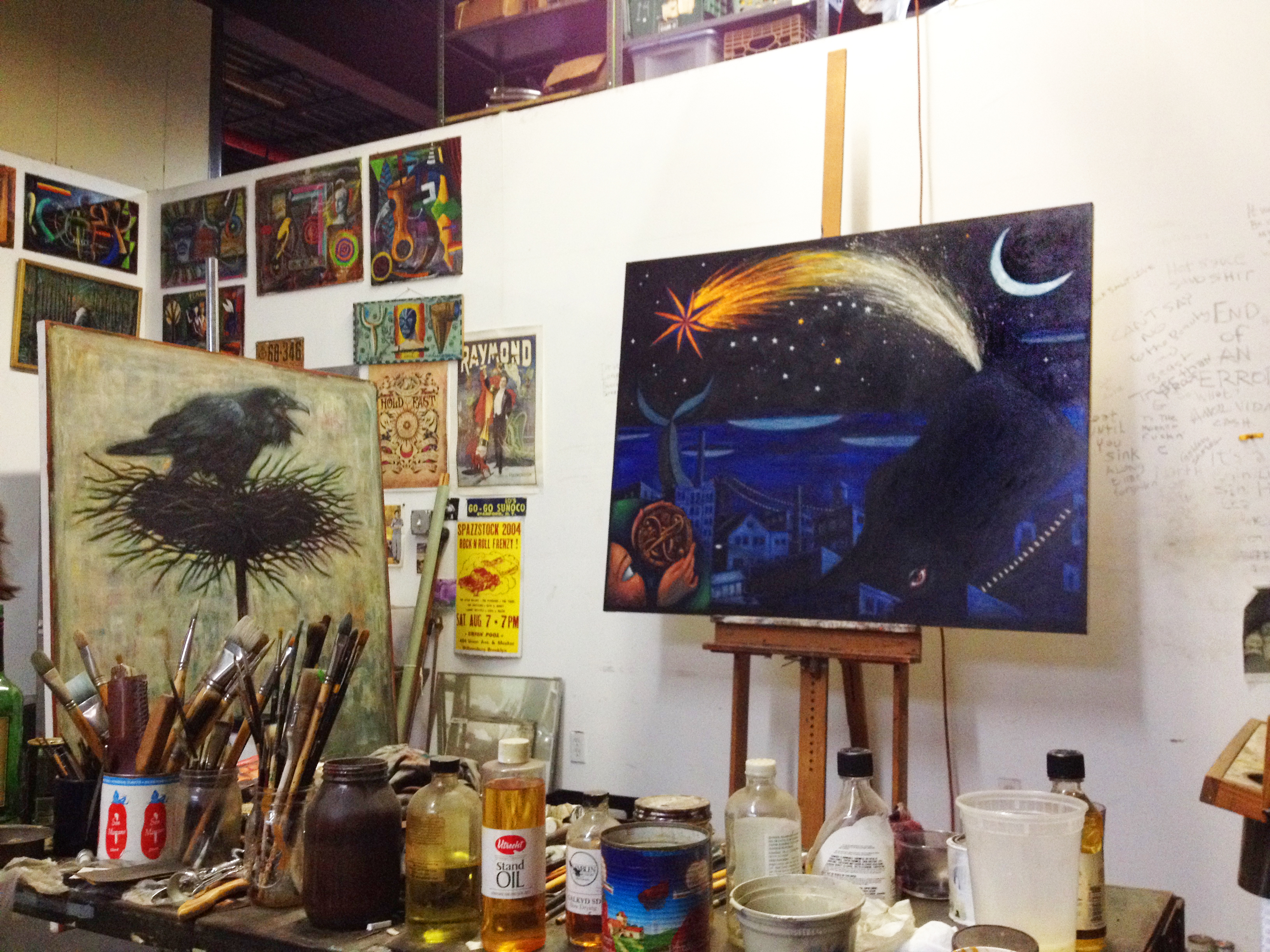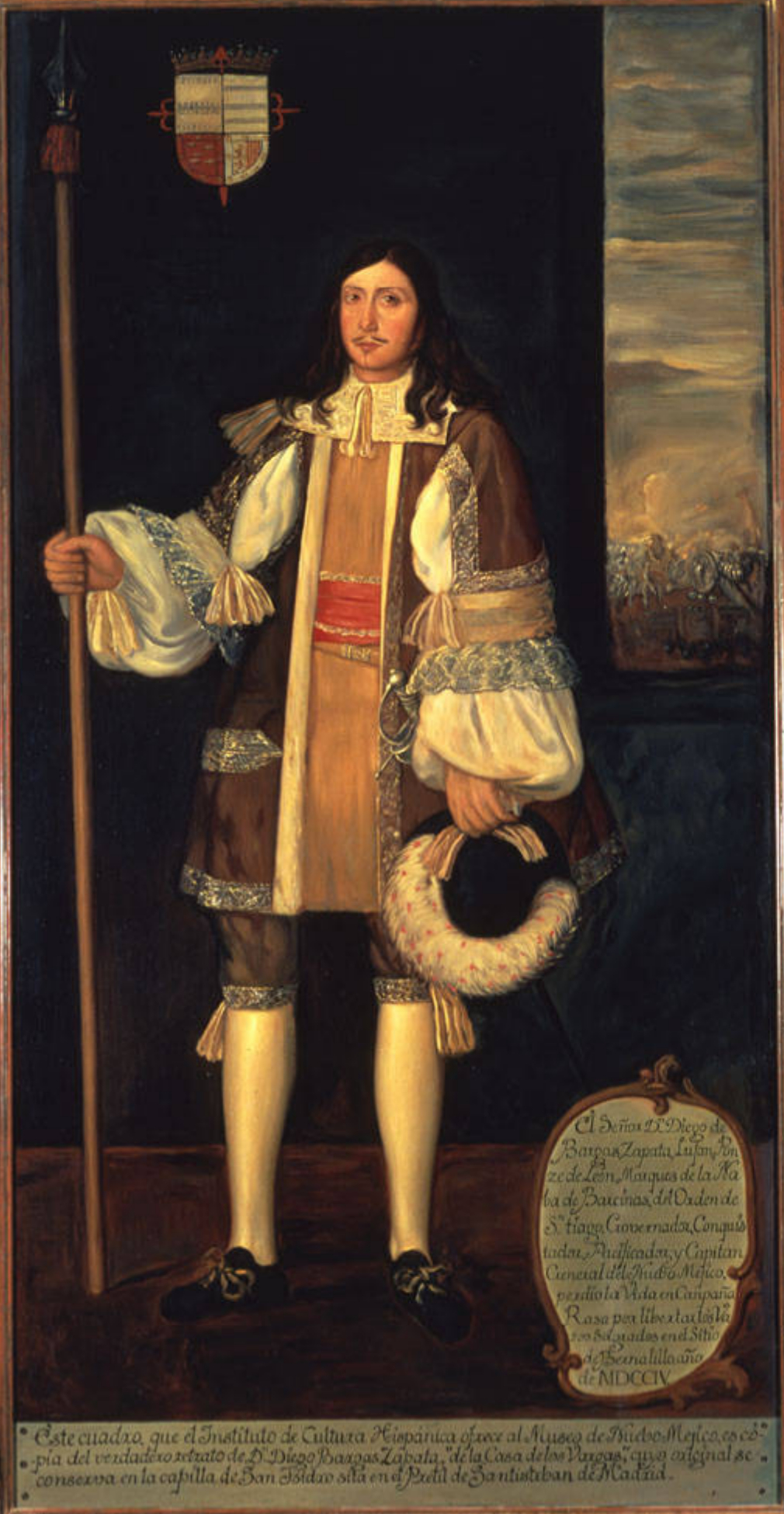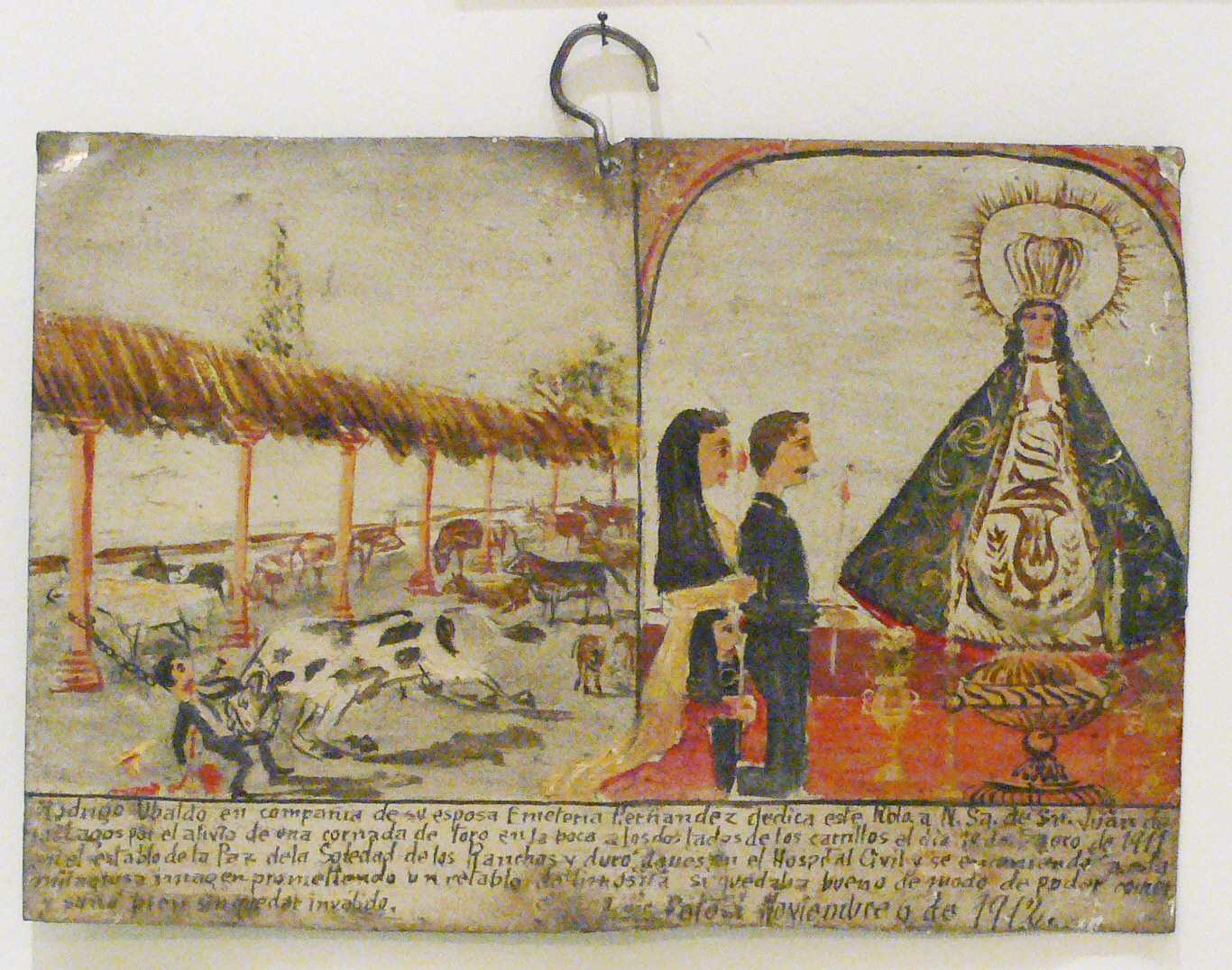|
Ray Abeyta
Ray Martìn Abeyta (November 13, 1956 – December 1, 2014) was an American painter. His paintings are a hybrid of ancient and contemporary Latin America, Latino subject matter in the Cuzco School style of Madonna (art), Madonna painting, lowrider culture, New Mexican traditional retablo painting, and representations of the colonialist encounters between Europeans and Mesoamericans. Early life Abeyta grew up in the small village of Santa Cruz de la Cañada (population 423) near the town of Española, New Mexico. He is of Basques, Basque descent. As a child, his family lived in several trailers. He was raised in the lowrider culture of Northern New Mexico. He has been described as a "precocious child who drew constantly," and credited his father for providing him with the encouragement to draw as a means of communication starting at a young age. While Abeyta's father was on active duty in the U.S. Army, they would correspond with one another in drawings. Education Abeyta received ... [...More Info...] [...Related Items...] OR: [Wikipedia] [Google] [Baidu] |
Santa Cruz, New Mexico
Santa Cruz is a census-designated place (CDP) in Santa Fe County, New Mexico, United States. It is part of the Santa Fe, New Mexico Metropolitan Statistical Area. The population was 423 at the 2000 census. History Overview The area that was later to be occupied by the village of Santa Cruz de la Cañada is located 25 miles northwest of Santa Fe, New Mexico, and a half-mile east of Española, New Mexico, at 5,655 feet AMSL, and UTM NAD 83, Z-13S, 404927E, 3983643N in the valley of the Santa Cruz River half-mile from its confluence with the Rio Grande. Upon arrival of Spanish conquistadores in 1540, the Santa Cruz area was inhabited by Tewa speakers (descendants of "Ancestral Puebloans," formerly referred to as "Anasazi"), and after Vargas' "reconquests" (of the Pueblo Revolt) of 1692 and 1696, by southern Tewa (or Tano) who had been relocated from the Galisteo Basin, 45 miles south, as a result of Vargas' Spanish repopulation efforts on behalf of the Spanish Crown. Among the best ... [...More Info...] [...Related Items...] OR: [Wikipedia] [Google] [Baidu] |
Classic Car
A classic car is an older car, typically 25 years or older, though definitions vary.While other languages, such as German and Dutch, may refer to classic cars as "oldtimers", this usage is unknown in English, where "old-timer" refers to an elderly person. The common theme is of an older car of historical interest to be collectible and tend to be restored rather than scrapped. Classic cars are a subset of a broader category of "collector cars" (which includes both restored classic cars vehicles and newer exotic vehicles). A subset of what is considered classic cars are known as antique cars (manufactured before 1980) or vintage cars (manufactured pre-World War II). Organizations such as the Classic Car Club of America (CCCA) maintain lists of eligible unmodified cars that are called "classic". These are described as "fine" or "distinctive" automobile, either American or foreign built, produced between 1915 and 1948. Post-World War II "classic cars" are not precisely defined an ... [...More Info...] [...Related Items...] OR: [Wikipedia] [Google] [Baidu] |
Indios (Indians), 2002, By Ray Abeyta
Indio may refer to: Places * Indio, Bovey Tracey, an historic estate in Devon, England * Indio, California, a city in Riverside County, California, United States People with the name * Indio (musician), Canadian musician Gordon Peterson * Índio, Brazilian football players: ** Índio (footballer, born 1931), or Aluísio Francisco da Luz ** Índio (footballer, born 1972), or Francisco Anibio da Silva Costa, indoor footballer, see 2004 FIFA Futsal World Championship ** Índio (footballer, born 1975), or Marcos Antônio de Lima ** Índio (footballer, born 1979), or José Sátiro do Nascimento ** Índio (footballer, born 1981), or Antônio Rogério Silva Oliveira ** Índio (footballer, born 1996), or Matheus da Cunha Gomes Ethnicities * Indio, a term referring to the indigenous peoples of the Americas * Indio, the Spanish Colonial racial term for the native Austronesian peoples of the Philippines between the 16th and 19th centuries * Indio, the Spanish term for Indian people, and ... [...More Info...] [...Related Items...] OR: [Wikipedia] [Google] [Baidu] |
Santa Fe, New Mexico
Santa Fe ( ; , Spanish for 'Holy Faith'; tew, Oghá P'o'oge, Tewa for 'white shell water place'; tiw, Hulp'ó'ona, label=Tiwa language, Northern Tiwa; nv, Yootó, Navajo for 'bead + water place') is the capital of the U.S. state of New Mexico. The name “Santa Fe” means 'Holy Faith' in Spanish, and the city's full name as founded remains ('The Royal Town of the Holy Faith of Saint Francis of Assisi'). With a population of 87,505 at the 2020 United States census, 2020 census, it is the List of municipalities in New Mexico, fourth-largest city in New Mexico. It is also the county seat of Santa Fe County. Its metropolitan area is part of the Albuquerque, New Mexico, Albuquerque–Santa Fe–Las Vegas, New Mexico, Las Vegas Albuquerque–Santa Fe–Las Vegas combined statistical area, combined statistical area, which had a population of 1,162,523 in 2020. Human settlement dates back thousands of years in the region, the placita was founded in 1610 as the capital of . It replace ... [...More Info...] [...Related Items...] OR: [Wikipedia] [Google] [Baidu] |
Mexican Museum (San Francisco)
The Mexican Museum (or El Museo Mexicano) is a museum created to exhibit the aesthetic expression of the Latino, Chicano, Mexican, and Mexican-American people, located in San Francisco, California, United States. As of 2022, their exhibition space was permanently closed at Fort Mason Center; and they are still in the process of moving to a new space at 706 Mission Street in Yerba Buena Gardens. History The Mexican Museum of San Francisco was founded by San Francisco artist Peter Rodríguez in 1975. He was inspired to create this museum in order to fill a void in the public's access to Mexican and Chicano art. The museum was originally located in San Francisco's Mission District on Folsom Street in 1975. The museum's new location was planned starting in 2015 to be built at 706 Mission Street across from Yerba Buena Gardens, as part the 53-story Yerba Buena Tower project, which will consist mostly of luxury condominiums. The entire relocation project was envisaged to cost $500 m ... [...More Info...] [...Related Items...] OR: [Wikipedia] [Google] [Baidu] |
Nautical Charts
A nautical chart is a graphic representation of a sea area and adjacent coastal regions. Depending on the scale of the chart, it may show depths of water and heights of land (topographic map), natural features of the seabed, details of the coastline, navigational hazards, locations of natural and human-made aids to navigation, information on tides and currents, local details of the Earth's magnetic field, and human-made structures such as harbours, buildings, and bridges. Nautical charts are essential tools for marine navigation; many countries require vessels, especially commercial ships, to carry them. Nautical charting may take the form of charts printed on paper (raster navigational charts) or computerized electronic navigational charts. Recent technologies have made available paper charts which are printed "on demand" with cartographic data that has been downloaded to the commercial printing company as recently as the night before printing. With each daily download, critica ... [...More Info...] [...Related Items...] OR: [Wikipedia] [Google] [Baidu] |
Aztec Codex
Aztec codices ( nah, Mēxihcatl āmoxtli , sing. ''codex'') are Mesoamerican manuscripts made by the pre-Columbian Aztec, and their Nahuatl-speaking descendants during the colonial period in Mexico. History Before the start of the Spanish colonization of the Americas, the Mexica and their neighbors in and around the Valley of Mexico relied on painted books and records to document many aspects of their lives. Painted manuscripts contained information about their history, science, land tenure, tribute, and sacred rituals. According to the testimony of Bernal Díaz del Castillo, Moctezuma had a library full of such books, known as ''amatl'', or ''amoxtli,'' kept by a ''calpixqui'' or nobleman in his palace, some of them dealing with tribute. After the conquest of Tenochtitlan, indigenous nations continued to produce painted manuscripts, and the Spaniards came to accept and rely on them as valid and potentially important records. The native tradition of pictorial document ... [...More Info...] [...Related Items...] OR: [Wikipedia] [Google] [Baidu] |
Ex Voto
An ex-voto is a votive offering to a saint or to a divinity; the term is usually restricted to Christian examples. It is given in fulfillment of a vow (hence the Latin term, short for ''ex voto suscepto'', "from the vow made") or in gratitude or devotion. Definition Ex-votos are placed in a church or chapel where the worshiper seeks grace or wishes to give thanks. The destinations of pilgrimages often include shrines decorated with ex-votos. Ex-votos can take a wide variety of forms. They are not only intended for the helping figure, but also as a testimony to later visitors of the received help. As such they may include texts explaining a miracle attributed to the helper, or symbols such as a painted or modeled reproduction of a miraculously healed body part, or a directly related item such as a crutch given by a person formerly lame. There are places where a very old tradition of depositing ex-votos existed, such as Abydos in ancient Egypt. Ex-voto paintings Especially in th ... [...More Info...] [...Related Items...] OR: [Wikipedia] [Google] [Baidu] |
Spanish Baroque Painting
Spanish Baroque painting refers to the style of painting which developed in Spain throughout the 17th century and the first half of the 18th century. The style appeared in early 17th century paintings, and arose in response to Mannerist distortions and idealisation of beauty in excess, appearing in early 17th century paintings. Its main objective was, above all, to allow the viewer to easily understand the scenes depicted in the works through the use of realism, while also meeting the Catholic Church's demands for 'decorum' during the Counter-Reformation. The naturalism typical of the Caravaggisti in Italy, and the dramatic illumination of Tenebrism that was introduced in Spain after 1610, would go on to shape the dominant style of painting in Spain in the first half of the 17th century. The style was later influenced by Flemish Baroque painting, as the Spanish Habsburgs ruled over an area of the Netherlands during this period. The arrival of Flemish painter Peter Paul Rubens ... [...More Info...] [...Related Items...] OR: [Wikipedia] [Google] [Baidu] |
New Mexico History Museum
The New Mexico History Museum is a history museum A museum ( ; plural museums or, rarely, musea) is a building or institution that cares for and displays a collection of artifacts and other objects of artistic, cultural, historical, or scientific importance. Many public museums make thes ... in Santa Fe, New Mexico, Santa Fe, New Mexico. It is part of the state-run Museum of New Mexico system operated by the New Mexico Department of Cultural Affairs. Opened in 2009, the museum houses of permanent and rotating exhibits covering the history of New Mexico from ancient Native American cultures to the present. The museum was built after the Museum of New Mexico's collection of historic artifacts had outgrown its previous home at the 400-year-old Palace of the Governors. The new $44 million museum opened to the public on May 24, 2009, receiving more than 10,000 visitors on its first day. It holds around 20,000 artifacts. The New Mexico History Museum has 3 1/2 floors of ex ... [...More Info...] [...Related Items...] OR: [Wikipedia] [Google] [Baidu] |
National Hispanic Cultural Center
The National Hispanic Cultural Center is an institution in Albuquerque, New Mexico dedicated to Hispanic culture, arts and humanities. The campus spans 20 acres and is located along the Rio Grande in Albuquerque, New Mexico, on Avenida César Chávez and 4th St. Now presenting 700 events a year, the NHCC is home to three theatres, an art museum, library, genealogy center, Spanish-language resource center, two restaurants (Pop Fizz Paleteria and M'Tucci's Cocina Grill) and the largest concave fresco in North America. The NHCC opened in 2000 and is one of several institutions governed by the State of New Mexico's Department of Cultural Affairs. Events, exhibitions and programs are presented in the areas of music, theatre, dance, visual arts, culinary arts, film, history, literary arts and cultural-significant customs, featuring local, national and international artists, scholars and entertainers. In addition to its own events, the NHCC also hosts hundreds of rental events each year ... [...More Info...] [...Related Items...] OR: [Wikipedia] [Google] [Baidu] |
Museum Of New Mexico
The Museum of New Mexico is a collection of museums, historic sites, and archaeological services governed by the State of New Mexico. It currently consists of six divisions : the Palace of the Governors state history museum, the New Mexico Museum of Art, the Museum of Indian Arts and Culture, the Museum of International Folk Art, the archaeology division, and the state historic sites. Each division within the Museum of New Mexico adheres to policies decided by the Museum of New Mexico Board of Regents, a group of New Mexico residents appointed by the governor with consent of the Senate. History The Museum of New Mexico was established on February 19, 1909, by the New Mexico Territorial legislature. This pre-statehood legislation mandated that the Museum of New Mexico be housed in the historic Palace of the Governors in Santa Fe. Over the years, the Museum of New Mexico added several other properties to include the New Mexico Museum of Art, Laboratory of Anthropology, Museum of Inter ... [...More Info...] [...Related Items...] OR: [Wikipedia] [Google] [Baidu] |








